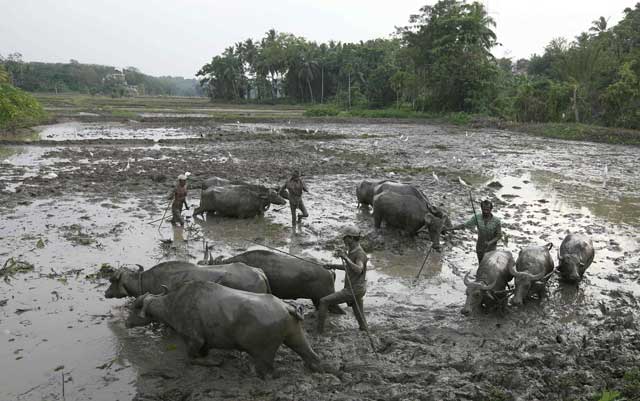Whatever the weather: Monsoon storms dominate lush tropical island

Your support helps us to tell the story
From reproductive rights to climate change to Big Tech, The Independent is on the ground when the story is developing. Whether it's investigating the financials of Elon Musk's pro-Trump PAC or producing our latest documentary, 'The A Word', which shines a light on the American women fighting for reproductive rights, we know how important it is to parse out the facts from the messaging.
At such a critical moment in US history, we need reporters on the ground. Your donation allows us to keep sending journalists to speak to both sides of the story.
The Independent is trusted by Americans across the entire political spectrum. And unlike many other quality news outlets, we choose not to lock Americans out of our reporting and analysis with paywalls. We believe quality journalism should be available to everyone, paid for by those who can afford it.
Your support makes all the difference.Sri Lanka has a tropical climate which leads to hot and very humid conditions all year round. There is some variety across the island, with the central highlands experiencing a cooler and more temperate climate, while coastal areas are moderated by sea breezes. The country also experiences a dry season and two wet seasons, with the latter coming from monsoon rain that falls in opposite halves of the country.
The south and west have their monsoon from May to September while the north and east see monsoon rains between October and January. The south-west monsoon is the more intense of the two and brings rain to the capital, Colombo. Located along the south-western coast, it receives about 2,500mm of rain a year. During the rest of the year there's very little precipitation, with areas in the north and east of the country generally more arid. The native creatures and plants here adapt accordingly to conserve precious moisture.
During the most recent monsoon, Sri Lanka had unusually heavy rainfall which has been linked to La Niña – a cooling in the eastern Pacific Ocean that also brought severe floods to Queensland, Australia. Record rainfall fell in November and continued for two months, leading to three major flooding events and landslides.
Temperatures on the Sri Lankan coast regularly climb to between 28C and 34C, and overnight they remain at a sweltering 22C and 26C. Combine this with the high humidity and the weather can feel very oppressive. In the central highlands, such as at Nuwara Eliya at 1,990m above sea level, daytime temperatures vary between 18C and 23C, falling to about 10C at night. It is not unusual to have overnight frost from time to time.
The best time to travel to Sri Lanka is between December and March for the west coast, southern highlands and interior, while May to September is best for visiting the east coast.
Dr Liz Bentley is the founder of the Weather Club, formed by the Royal Meteorological Society to promote an appreciation and understanding of the weather. Visit theweatherclub.org.uk for more information.
Join our commenting forum
Join thought-provoking conversations, follow other Independent readers and see their replies
Comments